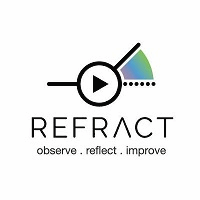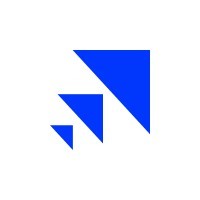Description

CrankWheel

Refract for Sales
Comprehensive Overview: CrankWheel vs Refract for Sales
Certainly! Here's a comprehensive overview of CrankWheel and Refract for Sales, focusing on their primary functions, target markets, market presence, and key differentiators.
CrankWheel
a) Primary Functions and Target Markets
-
Primary Functions:
- CrankWheel is a screen-sharing and collaboration tool primarily designed for sales teams. It allows sales representatives to share their screens instantly with prospects without requiring them to download any software.
- The tool is particularly focused on enhancing remote sales presentations and improving the engagement between sales representatives and potential clients.
- Key features include quick setup, browser-based sharing, mobile compatibility, customization for branding, and analytics to track engagement.
-
Target Markets:
- Primarily targets sales teams in industries such as financial services, SaaS, recruitment, and any sector that relies on remote client interactions.
- It is ideal for businesses of all sizes, from small businesses to large enterprises looking for efficient and easy-to-use screen-sharing solutions.
b) Market Share and User Base
- CrankWheel is not as widely known as major screen-sharing players like Zoom or Microsoft Teams, but it has carved out a niche market, particularly within sales teams that require quick, hassle-free sharing.
- Its market share is relatively smaller, mainly due to its specialized functionality and niche focus. However, its simplicity and sales-friendly features make it popular within its target demographic.
- The user base consists mainly of sales professionals and teams focusing on direct client interaction.
c) Key Differentiating Factors
- Instant Sharing Without Installations: The primary selling point of CrankWheel is its speed and ease of use. Prospects do not need to install any software, which reduces friction.
- Sales-Centric Features: Includes features like real-time analytics and lead alerts that cater specifically to sales scenarios.
- Customization: Offers branding options that allow companies to maintain consistency in client interactions.
- Accessibility: Works well on a variety of devices and browsers without compatibility issues.
Refract for Sales
a) Primary Functions and Target Markets
-
Primary Functions:
- Refract for Sales is a sales coaching and conversation intelligence platform. It helps sales teams to analyze calls, meetings, and demos to improve performance.
- Its core functionalities include call recording, analysis, AI-driven insights, and coaching tools that identify winning behaviors and areas for improvement.
- Enables tagging and scoring of calls, facilitates feedback, and integrates with existing CRM and telephony systems.
-
Target Markets:
- Aimed at businesses seeking to enhance their sales effectiveness through detailed analysis and coaching. It targets industries such as B2B sales, telecommunications, SaaS, and other sectors with a large sales force.
- Suitable for medium to large enterprises that have invested in a sales coaching culture.
b) Market Share and User Base
- Refract for Sales competes with other conversation intelligence tools like Gong and Chorus.ai. It tends to have a moderate market presence compared to these larger players.
- Its user base includes sales managers and team leaders focused on improving their team's selling techniques and outcomes.
c) Key Differentiating Factors
- Detailed Call Analysis: Offers robust AI-driven analytics that provide deep insights into sales conversations, highlighting successful strategies and potential improvements.
- Focus on Coaching: Unlike many tools that focus only on metrics, Refract emphasizes sales coaching, allowing managers to give targeted feedback based on call recordings.
- Integration Capabilities: It seamlessly integrates with various CRM systems, enhancing its utility within existing sales workflows.
- Behavior Identification: Uses AI to identify specific behaviors and techniques that correlate with successful sales outcomes, aiding in training and development.
Conclusion
CrankWheel and Refract for Sales serve different purposes within the sales process. CrankWheel focuses on enhancing the initial sales interaction through seamless screen-sharing, while Refract emphasizes post-interaction analysis and coaching. Each tool’s effectiveness depends on the specific needs of a sales team, whether it’s improving real-time engagement with prospects or analyzing and coaching sales calls for better outcomes.
Contact Info

Year founded :
2015
+1 877-753-2945
Not Available
Iceland
Not Available

Year founded :
Not Available
Not Available
Not Available
Not Available
Not Available
Feature Similarity Breakdown: CrankWheel, Refract for Sales
CrankWheel and Refract for Sales both cater to enhancing sales processes, though they focus on different aspects of the sales cycle. Here's a feature similarity breakdown for both:
a) Core Features in Common
-
Screen Sharing:
- CrankWheel is primarily focused on screen sharing, enabling sales representatives to demonstrate products or services live to clients without the need for downloads.
- While Refract is more about sales performance analysis, having integrations that can allow similar functionalities for better sales coaching sessions or interactions.
-
Real-time Interaction:
- Both platforms facilitate real-time interactions, where salespeople can engage directly with clients or prospects.
-
Sales Enablement:
- Both CrankWheel and Refract contribute to sales enablement, albeit through different methodologies (direct presentations for CrankWheel, analytics, and coaching for Refract).
b) User Interface Comparison
-
CrankWheel:
- Simplicity is a key aspect, focusing on ease of use and quick access. Screen sharing can be initiated almost instantly with minimal navigation, catering to fast-paced sales environments.
- The interface is clean and minimal, reducing any potential distractions during a presentation.
-
Refract for Sales:
- The interface is more data-driven, providing in-depth analytics and insights. It has dashboards and metrics that might require a learning curve to navigate effectively.
- It's designed to integrate a lot of information into digestible formats for sales analysis and improvement, which can make it appear more complex compared to CrankWheel.
c) Unique Features
-
CrankWheel:
- No-Download Screen Sharing: This is a standout feature of CrankWheel, allowing users to access screen sharing without any installations, which is particularly beneficial for clients with strict IT policies or those who are less tech-savvy.
- Phone Conference Integration: Offers seamless integration with phone conferences for a more traditional sales approach.
-
Refract for Sales:
- Sales Call Analytics: A key differentiator is Refract’s ability to analyze sales calls, providing actionable insights and identifying areas for improvement.
- Sales Coaching and Feedback Tools: Provides tools for managers to give feedback and improve sales performance through recorded calls and interactions.
- AI-driven Performance Insights: Utilizes AI to provide advanced analytics and insights into sales conversations, helping to identify patterns and successful strategies.
In summary, while CrankWheel excels in facilitating direct client interaction with a focus on simplicity and accessibility, Refract for Sales is more about improving the internal processes of sales through in-depth analysis and coaching. Each tool provides distinct value depending on the specific needs of a sales team.
Features

Not Available

Not Available
Best Fit Use Cases: CrankWheel, Refract for Sales
CrankWheel and Refract for Sales are tools designed to enhance different aspects of the sales process, and each caters to specific needs and business scenarios. Here's a detailed look at their best fit use cases:
a) CrankWheel
Best Fit Use Cases:
- Types of Businesses or Projects:
- Small to Medium-Sized Enterprises (SMEs): CrankWheel is ideal for SMEs that need a straightforward and quick way to engage clients through screen sharing without requiring clients to download any software.
- Sales Teams in Fast-Paced Environments: Companies with sales teams that prioritize speed and efficiency in client communication will find CrankWheel beneficial, particularly in settings like inside sales, telemarketing, and customer support.
- Financial and Insurance Services: These sectors often need to visually explain complex information quickly to clients, making CrankWheel's seamless screen-sharing a valuable tool.
- Remote Sales Demonstrations: It’s perfect for businesses that need to conduct product demonstrations or walkthroughs remotely, allowing for instant visual communication with prospects.
b) Refract for Sales
Preferred Scenarios:
- Types of Businesses or Projects:
- Sales Coaching and Training: Refract for Sales is excellent for businesses focused on improving sales performance through ongoing coaching. It is useful for analyzing sales calls to identify strengths and areas for improvement.
- Companies with Large Sales Teams: Organizations with an extensive sales force benefit from Refract's ability to scale sales training and track progress across teams.
- B2B Sales Environments: Refract is tailored for business-to-business sales teams that rely heavily on conversations to close deals, benefiting from detailed call analysis and feedback mechanisms.
- Performance Analytics: Businesses interested in data-driven sales improvements and detailed analytics will find Refract’s functionalities particularly advantageous.
d) Industry Verticals and Company Sizes
-
CrankWheel:
- Industry Verticals: CrankWheel is versatile and applicable in telecommunications, SaaS companies, insurance, real estate, and any industry relying on frequent, visual client interactions.
- Company Sizes: It caters well to small and medium-sized businesses due to its ease of use and cost-effectiveness, but can also be employed by larger enterprises needing efficient screen sharing solutions.
-
Refract for Sales:
- Industry Verticals: This tool is particularly useful in sectors where sales performance and training are pivotal, such as technology, finance, healthcare, and enterprise services.
- Company Sizes: While suitable for businesses of various sizes, its functionalities shine in larger organizations with multiple sales teams, where tracking and analyzing numerous interactions require robust features.
Both CrankWheel and Refract for Sales offer distinct advantages depending on the nature of the business and its specific needs within the sales process, providing solutions that cater to a variety of industries and company sizes.
Pricing

Pricing Not Available

Pricing Not Available
Metrics History
Metrics History
Comparing undefined across companies
Conclusion & Final Verdict: CrankWheel vs Refract for Sales
When evaluating CrankWheel and Refract for Sales, the decision largely depends on the specific needs of your sales team and organizational priorities. Both tools serve distinct functions and excel in different areas, which makes the context of use very important.
a) Best Overall Value:
CrankWheel might be considered as offering the best overall value for teams primarily focused on seamless, real-time screen sharing and visual presentation capabilities during the sales process. Its streamlined approach is ideal for sales demonstrations and initial customer engagement where real-time interaction is critical and simplicity is prioritized.
On the other hand, Refract for Sales could be seen as more valuable for sales teams looking for comprehensive sales coaching, analysis, and improvement of sales conversations. It provides greater value for organizations focused on long-term performance improvement and in-depth conversation analytics, which can lead to higher conversion rates and sales performance over time.
b) Pros and Cons:
CrankWheel:
-
Pros:
- Instant screen sharing with no downloads required by the customer, reducing setup time and technical friction.
- Highly intuitive and user-friendly interface, making it accessible for sales reps with varying levels of tech-savviness.
- Fast and reliable, ensuring a smooth experience even under low-bandwidth conditions.
-
Cons:
- Limited to screen sharing and does not provide in-depth sales analytics or coaching.
- May not offer as robust integrations with CRM systems or other sales tools compared to more comprehensive solutions.
Refract for Sales:
-
Pros:
- Offers advanced tools for analyzing sales calls, enabling sales teams to identify best practices and areas for improvement.
- Facilitates better coaching opportunities with detailed insights and performance metrics.
- Can enhance overall sales strategy with in-depth conversation intelligence.
-
Cons:
- Potentially complex user interface due to the advanced features, which might require more training and adaptation.
- Higher cost due to its extensive features, which could be unnecessary if screen sharing is the primary requirement.
c) Specific Recommendations:
-
Evaluate Needs: If your main goal is quick, hassle-free sharing during live sales presentations, CrankWheel is likely the more suitable choice. It shines in environments where quick deployment and minimal technical obstacles are priorities.
-
Long-term Improvement: For sales teams aiming to foster growth through detailed analysis and coaching, Refract for Sales is the more suitable option with its comprehensive set of features designed to improve sales effectiveness over time.
-
Budget and Integration: Consider your budget and the tools you currently use to ensure compatibility and smooth integration. CrankWheel is generally more affordable but offers fewer advanced features compared to Refract for Sales.
-
Trial and Evaluation: Leverage free trials or demos offered by both tools to better understand their user interfaces and feature sets, ensuring that the chosen product aligns well with your sales team's workflow and objectives.
Ultimately, the choice between CrankWheel and Refract for Sales should be based on your specific requirements, budget constraints, and the strategic goals of your sales team.
Add to compare
Add similar companies



